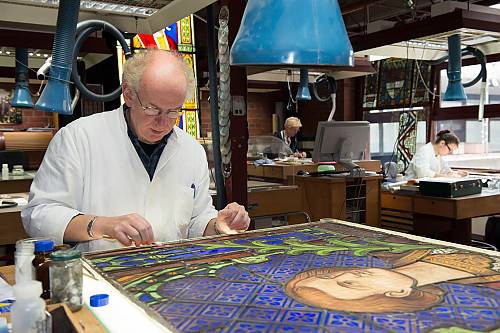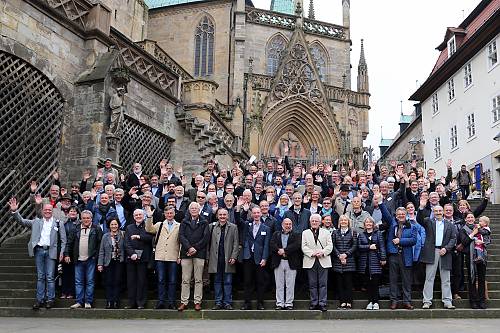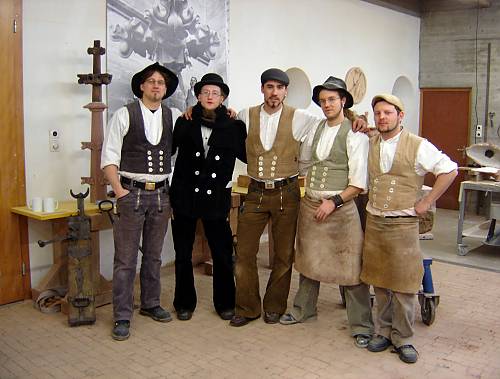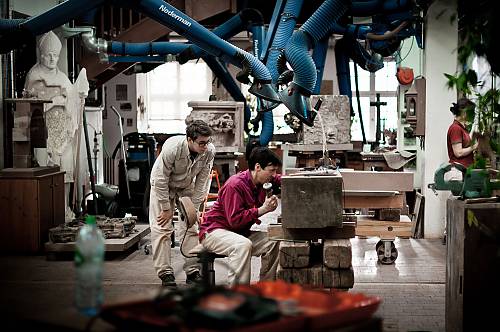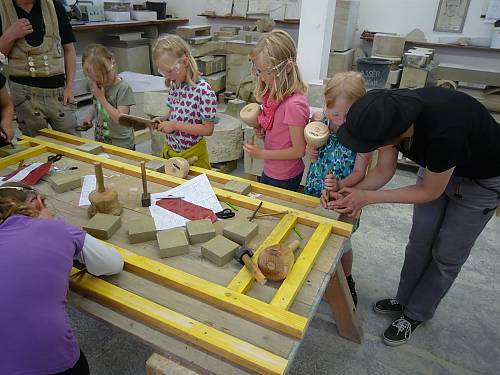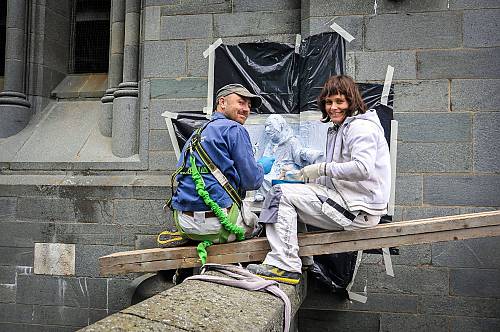Craft techniques and customary practices of cathedral workshops, or Bauhütten, in Europe, know-how, transmission, development of knowledge and innovation
Germany, Austria, France, Norway and Switzerland
Selected in 2020 on the Register of Good Safeguarding Practices
 © protel/Hohe Domkirche Köln, Dombauhütte/Inventive Studio/M.Laufenberg/T.Schwartz, Ville et Eurométropole de Strasbourg/embfilm e.U. :
© protel/Hohe Domkirche Köln, Dombauhütte/Inventive Studio/M.Laufenberg/T.Schwartz, Ville et Eurométropole de Strasbourg/embfilm e.U. : The workshop organization, or Bauhüttenwesen, appeared in the Middle Ages on the construction sites of European cathedrals. Now, as then, these workshops are home to various trades working in close collaboration. The term Bauhüttenwesen in German refers both to the organization of a workshop network dealing with the construction or restoration of a building and to the workshop itself, as a place of work. Since the end of the Middle Ages, these workshops have formed a supra-regional network extending beyond national borders. The workshops safeguard the traditional customs and rituals of their professions, as well as a wealth of knowledge transmitted across the generations, both orally and in writing. Faced with the progressive shortage of technical skills and in an age of increasing mechanization and cost optimization, the workshops created or re-established in the nineteenth and twentieth centuries have become institutions that preserve, transmit and develop traditional techniques and know-how. Their commitment to safeguarding and promoting living heritage, through targeted awareness raising, information and communication measures and close cooperation with shareholders in the field of politics, the church, monument conservation, business and research, can be considered as an example to be adapted and implemented in other contexts worldwide. Through their organization and training system for on-site practice, the workshops could be considered as a model for all types of buildings that need to be built and maintained.




